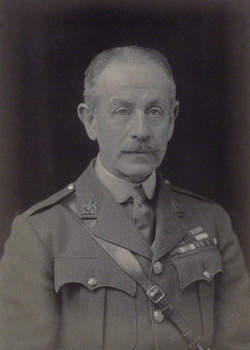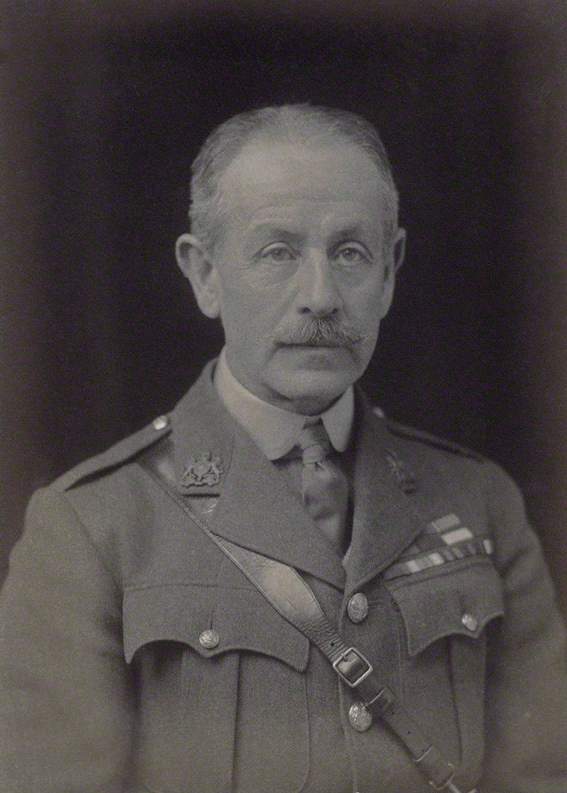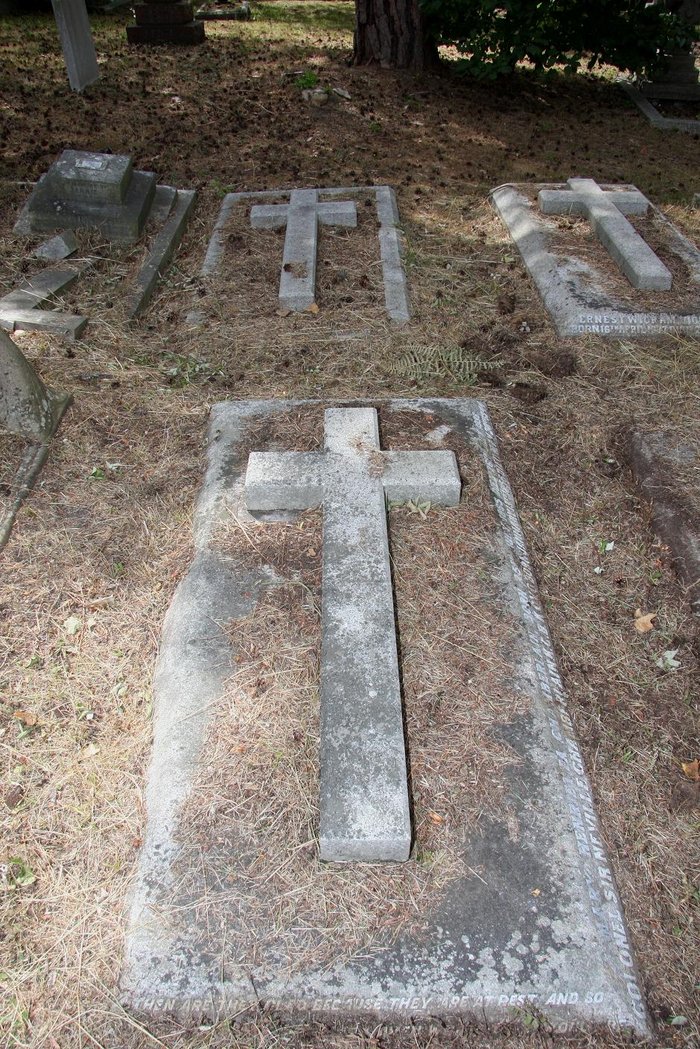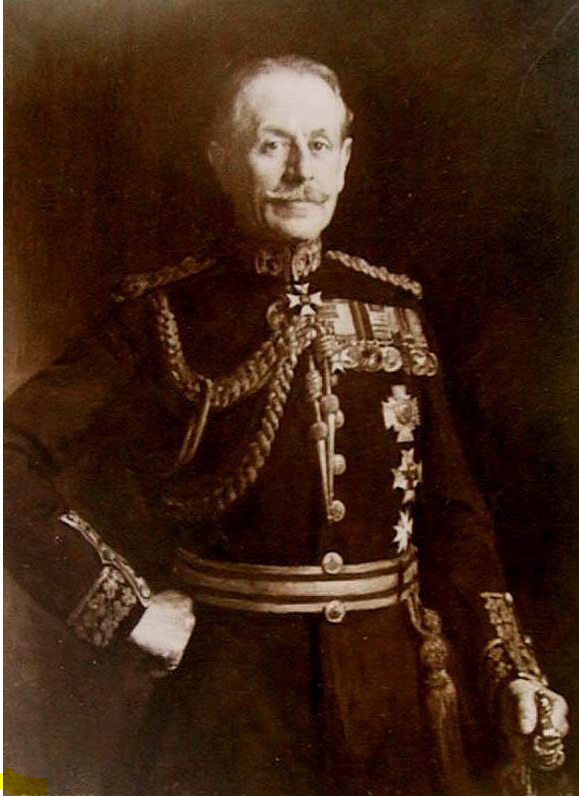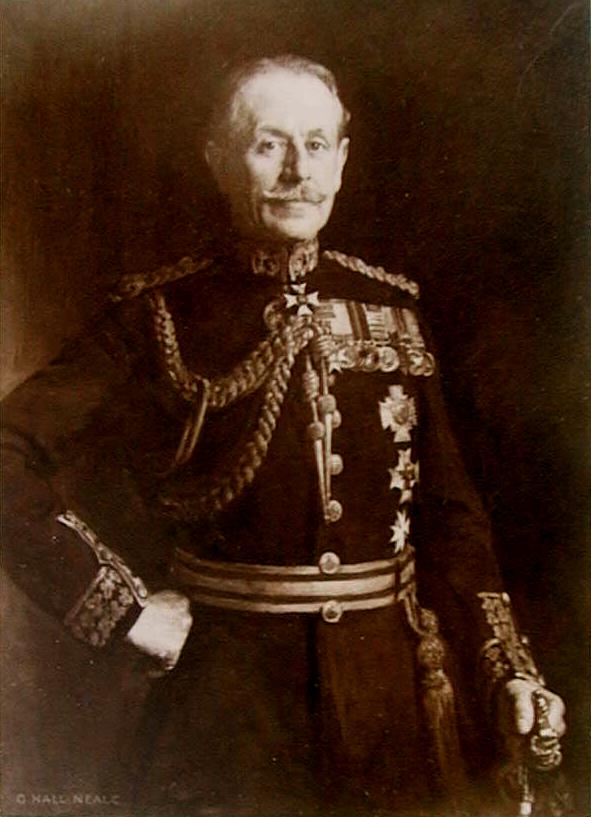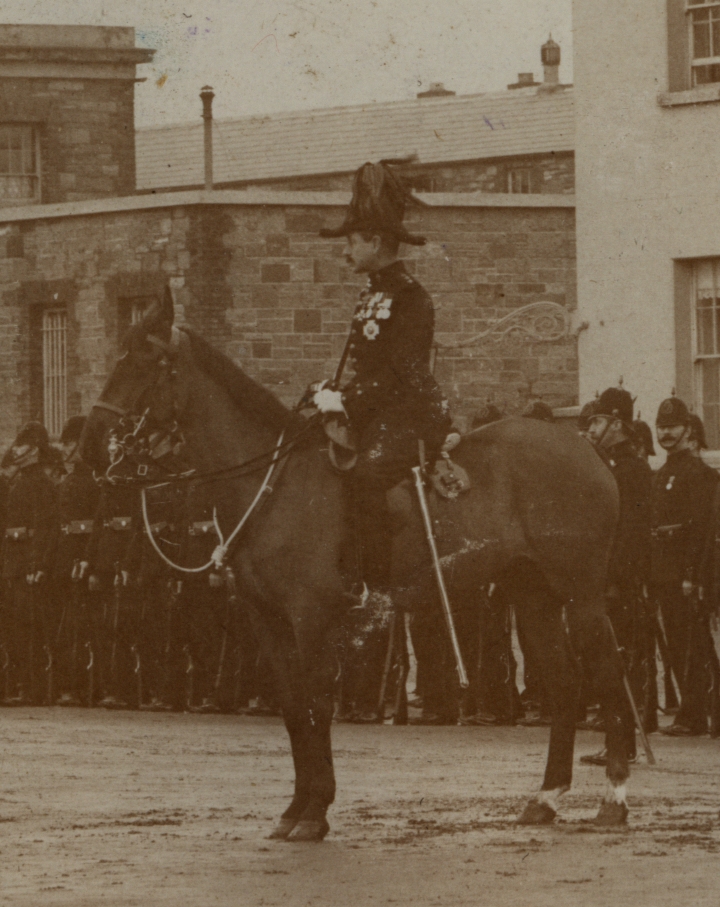∼Inventor of the Game of Snooker, Col. Sir Neville Francis Fitzgerald Chamberlain was born at Upton Park, Buckinghamshire, England. He was the son of Charles Francis Falcon Chamberlain (1826-1870) and Marian Ormsby Drury. He married in St Mark's Church, Bangalore, India on 1/9/1886, Mary Henrietta (1866-26/7/1936), daughter of Major-General Alexander Charles Hay, Bengal Staff Corps. joined the army as a Sub Lieutenant on 9/8/1873, serving with the 11th (Devonshire) Regiment and promoted Lieutenant on 9/8/1874; Bengal Staff Corps on 25/7/1876 serving with the Central India Horse, 1876; served on the staff of Sir Frederick Sleigh Roberts (1832-1914), throughout the Afghan War, 1878-80 and present at the capture of Peiwar Peital, action at Mungiar defile, expedition into Khost Valley, battle of Charasiah, operations at and around Kabul in December, 1879; March from Khabul to Khandahar and the battle of Khandahar of 1 September (wounded); Despatches (London Gazette, 4/9/1879, 16/1/1880 and 4/5/1880); Medal and four clasps and the Bronze Star); ADC to Sir Frederick Sleigh Roberts, commander-in-Chief, Madras, 28/11/1881-17/8/1885; promoted Captain on 9/8/1885 and Brevet Major on 7/11/1885; Persian Interpreter to the Commander-in-Chief, India, 28/11/1885-31/12/1889; served with the Burmese Expedition, 1886-7 as DAA and QMG (Medal and clasp); Despatches (London Gazette, 2/9/1887). Military Secretary to the Kashmir Government and reorganized the Kashmir Army, 1890-7; promoted Major on 9/8/1894, Brevet Lieutenant-Colonel 1/7/1887, Brevet Colonel, 6/1/1894 and Colonel on 6/2/1899; Commanded the Khyber Force, 1899; Private Secretary to Field Marshal Lord Roberts in the South African War, 1899-1900; Operations in the Orange Free State, February to May 1900, including operations at Poardeberg, (17th to 26th February); actions at Poplar Grove, Driefontein, Vet River (5th and 6th May) and Zand River; operations in the Transvaal in May and June, 1900, including actions near Johannesburg, Praetoria and Diamond Hill (11th and 12th June); operations in the Transvaal east of Praetoria, July, 1900 (Despatches, London Gazette 8/2/1901); Afghan Medal, 1878-80, with four clasps for Peiwar Kotal, Charasia, Kabul and Kandahar; Kabul to Kandahar Star, 1878-80; India General Service Medal, 1854, with one clasp for Burma, 1885-7; Queen's South Africa Medal, 1899-1902, with five clasps for the Cape Colony, Paardeberg, Driefontein, Johannesburg and Diamond Hill; inspector general 1/9/1900; CB (Military), 1900; KCB (Civil), 1903; King Edward VII Visit to Ireland Medal, 1903; KCVO (Civil), 1911; awarded in 1915 the King's Police Medal, 1909 (L.G. 1/1/1915). Inspector General of the Royal Irish Constabulary, 1900-1916. pensioned 31/7/1916; in retirement he resided at Brookville House, Raheny, Dublin, Ireland and later at The Wilderness, Ascot, Berkshire, England where he died on 28/5/1944. He is buried in the cemetery of All Souls Church, South Ascot, England.
∼Inventor of the Game of Snooker, Col. Sir Neville Francis Fitzgerald Chamberlain was born at Upton Park, Buckinghamshire, England. He was the son of Charles Francis Falcon Chamberlain (1826-1870) and Marian Ormsby Drury. He married in St Mark's Church, Bangalore, India on 1/9/1886, Mary Henrietta (1866-26/7/1936), daughter of Major-General Alexander Charles Hay, Bengal Staff Corps. joined the army as a Sub Lieutenant on 9/8/1873, serving with the 11th (Devonshire) Regiment and promoted Lieutenant on 9/8/1874; Bengal Staff Corps on 25/7/1876 serving with the Central India Horse, 1876; served on the staff of Sir Frederick Sleigh Roberts (1832-1914), throughout the Afghan War, 1878-80 and present at the capture of Peiwar Peital, action at Mungiar defile, expedition into Khost Valley, battle of Charasiah, operations at and around Kabul in December, 1879; March from Khabul to Khandahar and the battle of Khandahar of 1 September (wounded); Despatches (London Gazette, 4/9/1879, 16/1/1880 and 4/5/1880); Medal and four clasps and the Bronze Star); ADC to Sir Frederick Sleigh Roberts, commander-in-Chief, Madras, 28/11/1881-17/8/1885; promoted Captain on 9/8/1885 and Brevet Major on 7/11/1885; Persian Interpreter to the Commander-in-Chief, India, 28/11/1885-31/12/1889; served with the Burmese Expedition, 1886-7 as DAA and QMG (Medal and clasp); Despatches (London Gazette, 2/9/1887). Military Secretary to the Kashmir Government and reorganized the Kashmir Army, 1890-7; promoted Major on 9/8/1894, Brevet Lieutenant-Colonel 1/7/1887, Brevet Colonel, 6/1/1894 and Colonel on 6/2/1899; Commanded the Khyber Force, 1899; Private Secretary to Field Marshal Lord Roberts in the South African War, 1899-1900; Operations in the Orange Free State, February to May 1900, including operations at Poardeberg, (17th to 26th February); actions at Poplar Grove, Driefontein, Vet River (5th and 6th May) and Zand River; operations in the Transvaal in May and June, 1900, including actions near Johannesburg, Praetoria and Diamond Hill (11th and 12th June); operations in the Transvaal east of Praetoria, July, 1900 (Despatches, London Gazette 8/2/1901); Afghan Medal, 1878-80, with four clasps for Peiwar Kotal, Charasia, Kabul and Kandahar; Kabul to Kandahar Star, 1878-80; India General Service Medal, 1854, with one clasp for Burma, 1885-7; Queen's South Africa Medal, 1899-1902, with five clasps for the Cape Colony, Paardeberg, Driefontein, Johannesburg and Diamond Hill; inspector general 1/9/1900; CB (Military), 1900; KCB (Civil), 1903; King Edward VII Visit to Ireland Medal, 1903; KCVO (Civil), 1911; awarded in 1915 the King's Police Medal, 1909 (L.G. 1/1/1915). Inspector General of the Royal Irish Constabulary, 1900-1916. pensioned 31/7/1916; in retirement he resided at Brookville House, Raheny, Dublin, Ireland and later at The Wilderness, Ascot, Berkshire, England where he died on 28/5/1944. He is buried in the cemetery of All Souls Church, South Ascot, England.
Family Members
Sponsored by Ancestry
Advertisement
Explore more
Sponsored by Ancestry
Advertisement
